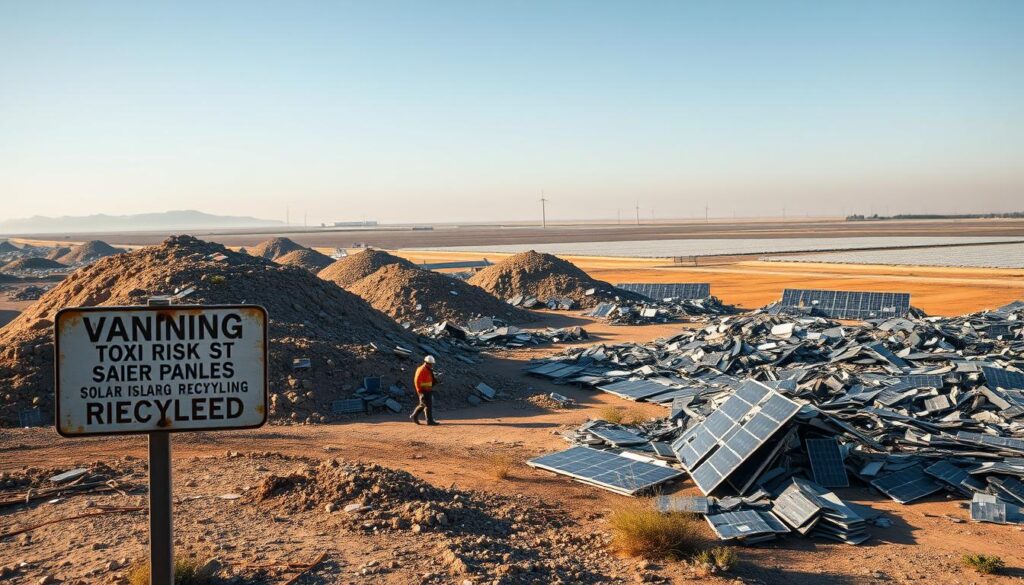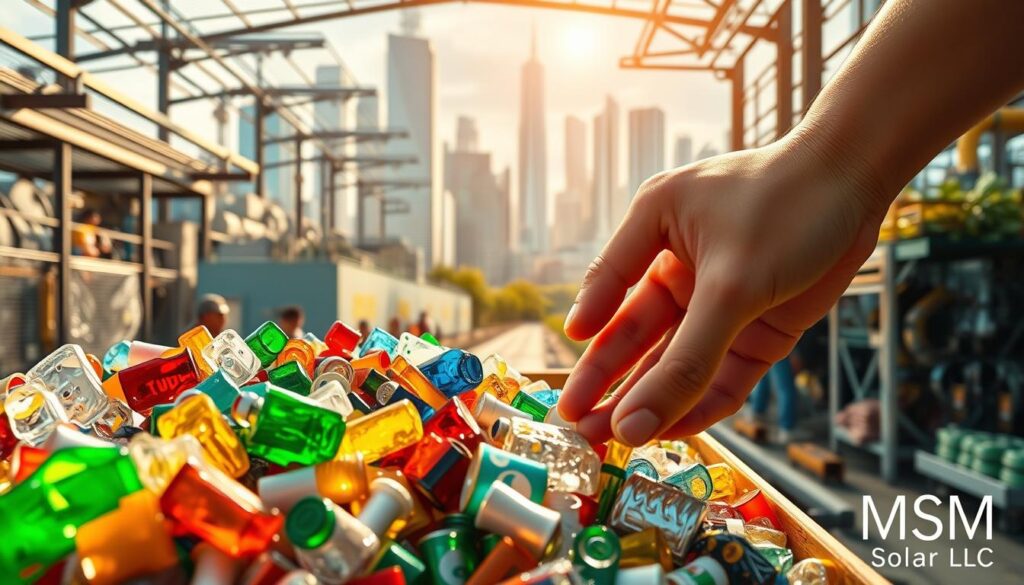Right now, 90% of retired renewable energy systems in the U.S. end up buried in landfills.
That’s enough discarded material to cover 3,000 football fields by 2030, picture that sprawl across Florida’s beaches and wetlands. I’ve installed these systems for years, watching their efficiency fade after 25-30 years. But few realize what happens next.
Companies like SolarCycle prove there’s hope. They recover silver, copper, and silicon through mechanical processes, turning old units into valuable resources. Yet high costs keep many from choosing this eco-friendly path.
Florida stands at a crossroads. We can either ignore the growing waste problem or lead the charge in sustainable solutions.
If you’re upgrading your setup, call MSM Solar LLC at (850) 737-5197.
We’ll ensure your retired equipment gets the responsible care it deserves.
Key Takeaways
- Most retired units currently end up in landfills nationwide.
- By 2030, discarded materials could cover 3,000 football fields.
- Recycling recovers precious metals but faces cost barriers.
- Florida has an opportunity to pioneer sustainable practices.
- Professional services like MSM Solar LLC handle responsible disposal.
Solar Cost Calculator – Florida Panhandle Only
* Estimate based on $3.25 per watt for solar installation.
* For Tesla Powerwall 3 Batteries, $15,000 for the first battery, $12,000 for each additional battery.
* Other variations and types of Batteries are available.
How Solar Panel Recycling Works Today
Every time I visit a recycling facility, I’m amazed by the transformation happening behind the scenes. Retired units aren’t just crushed, they’re dismantled with precision to reclaim precious materials.
The difference between mechanical and chemical methods?
One’s like peeling an orange; the other’s like extracting gold.
Mechanical vs. Chemical Recycling Processes
Mechanical recycling is straightforward. Machines grind down glass into cullet, worth about $3 per unit. It’s efficient, but I’ve seen firsthand how it leaves value on the table, like tossing out the juice after eating the fruit.
Chemical processes, like ROSI’s, dive deeper. They recover *95% of silver* and high-purity silicon. Imagine salvaging every thread of silver that once channeled your home’s energy. That’s the power of innovation.
Key Materials Recovered: Silver, Copper, and Silicon
One retired unit holds $10–$19 in reusable materials. Copper wiring and aluminum frames are the “easy wins,” but Florida’s heat speeds up wear and tear. Timing matters, delay too long, and those resources vanish.
Silicon is the hidden hero. Reusing it could cut mining demand dramatically. Yet today, most glass gets sold for pennies. It’s a waste that stings, but pioneers are working to melt it into new units.
When you choose recycling, you’re not just disposing, you’re fueling a cycle that benefits everyone. Next time you upgrade, think beyond the landfill.
Are Solar Panels Recyclable in Florida? Challenges and Progress
Florida’s sunny skies hide a growing shadow, mountains of retired units piling up in landfills. I’ve talked to Tampa homeowners shocked to learn their old systems might leak lead or cadmium. Unlike California, we lack statewide laws to prevent this hazardous waste from seeping into our soil.

Florida’s Solar Waste Projections and Landfill Risks
Retired units here face a grim fate. Without proper recycling, metals like lead can contaminate groundwater. I’ve seen reports showing Miami-Dade’s landfills nearing capacity, imagine adding thousands of discarded systems yearly.
The EU’s WEEE directive recycles just 10% of units. Florida hasn’t even started. States like Washington now require manufacturers to fund recycling programs. We’re lagging behind.
State Policies vs. Federal Gaps in Recycling Mandates
California tests every unit for toxins, costing $1,500+.
Here?
No one checks if your 2010 system is safe. The feds offer zero guidance, leaving states to draft rules alone.
First Solar proves change is possible, they recycle 90% of their units. Others must step up. Recovered raw materials like silicon could slash mining demand. Let’s push Tallahassee to act before our landfills turn toxic.
The Economic and Environmental Case for Recycling
Numbers don’t lie, recycling saves money and the planet. I’ve crunched the data: tossing a retired unit into a landfill costs $5 upfront but risks creating future Superfund sites.
Reprocessing it?
$15–$45, with raw materials like silver and copper flowing back into the supply chain. That’s a win-win.

Cost Comparison: Recycling vs. Landfilling
Landfills seem cheap until you account for hidden costs. A single unit emits 97 lbs more CO2 when buried versus recycled.
Over 80 million metric tons of retired units by 2050?
That’s like adding 3 million cars to Florida’s roads yearly.
Europe proves it’s possible. Their manufacturer-funded programs slash recycling solar costs to $0.75 per unit. Here, we pay more, but the long-term savings in energy and cleanup justify it.
Reducing Mining Demand Through Circular Supply Chains
Reusing aluminum saves 95% of the energy needed to mine it. Picture powering Orlando with reclaimed raw materials instead of strip-mined bauxite. Companies like SolarCycle already turn old units into new ones, cutting mining demand by 30%.
By 2050, recoverable materials could hit $15B globally. That’s not just eco-friendly, it’s smart economics. Let’s close the loop and build a future where every unit fuels the next.
Conclusion: Florida’s Path Forward and How to Act
Change starts with action, Florida can lead the clean energy revolution. Washington State’s 2025 recycling law proves solutions exist. NREL’s research could slash costs, making recycling accessible for all.
Homeowners, ask installers like MSM Solar LLC about take-back programs. Call (850) 737-5197, we’ll handle your retired units responsibly. Advocate for laws that hold manufacturers accountable.
Share this with neighbors. Together, we’ll replace landfills with solutions. Let’s build a brighter future, one recycled unit at a time.




